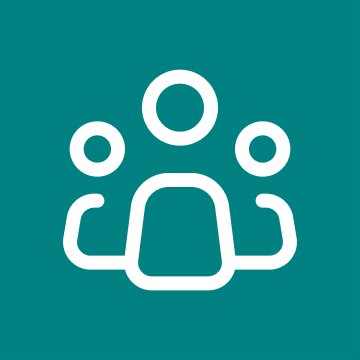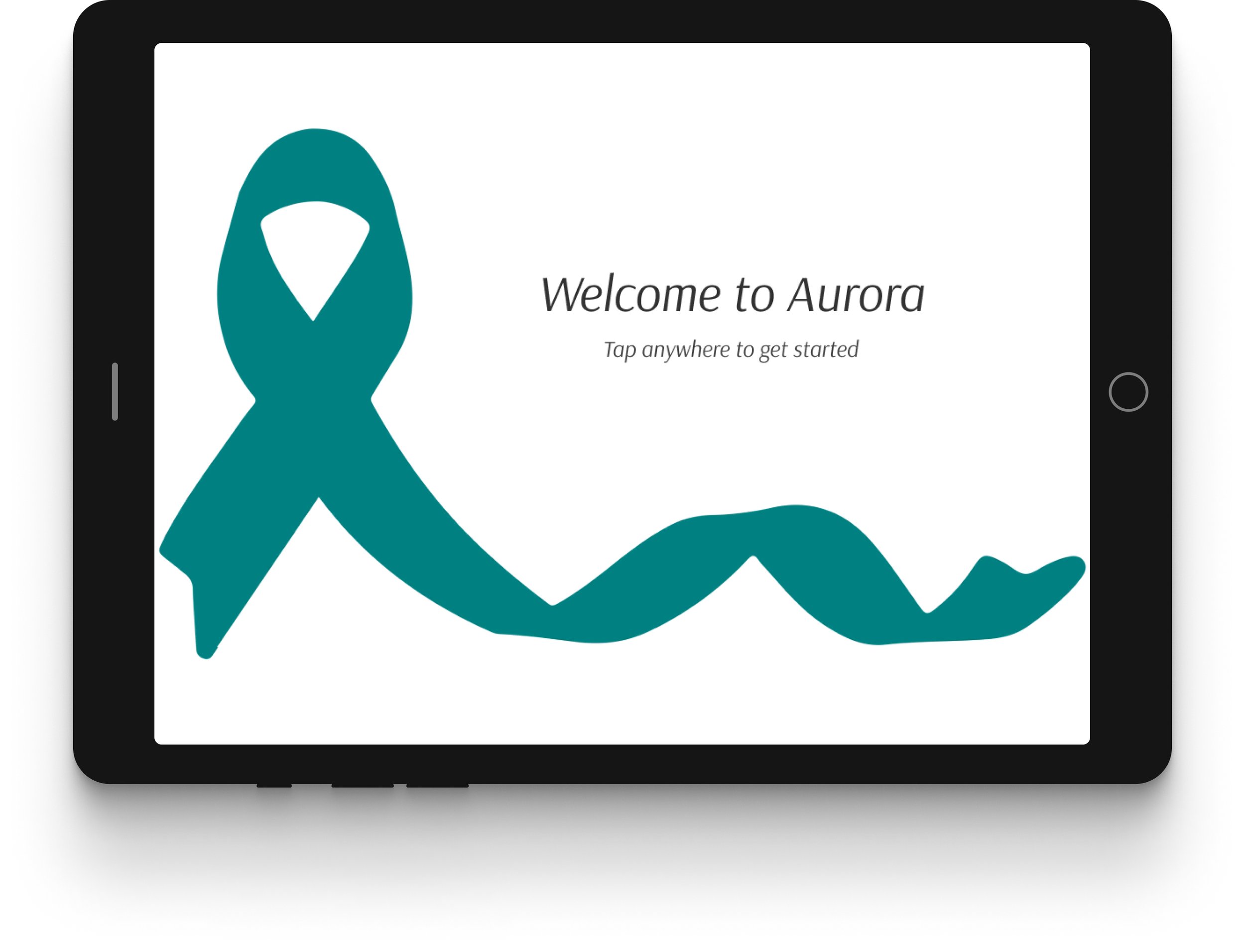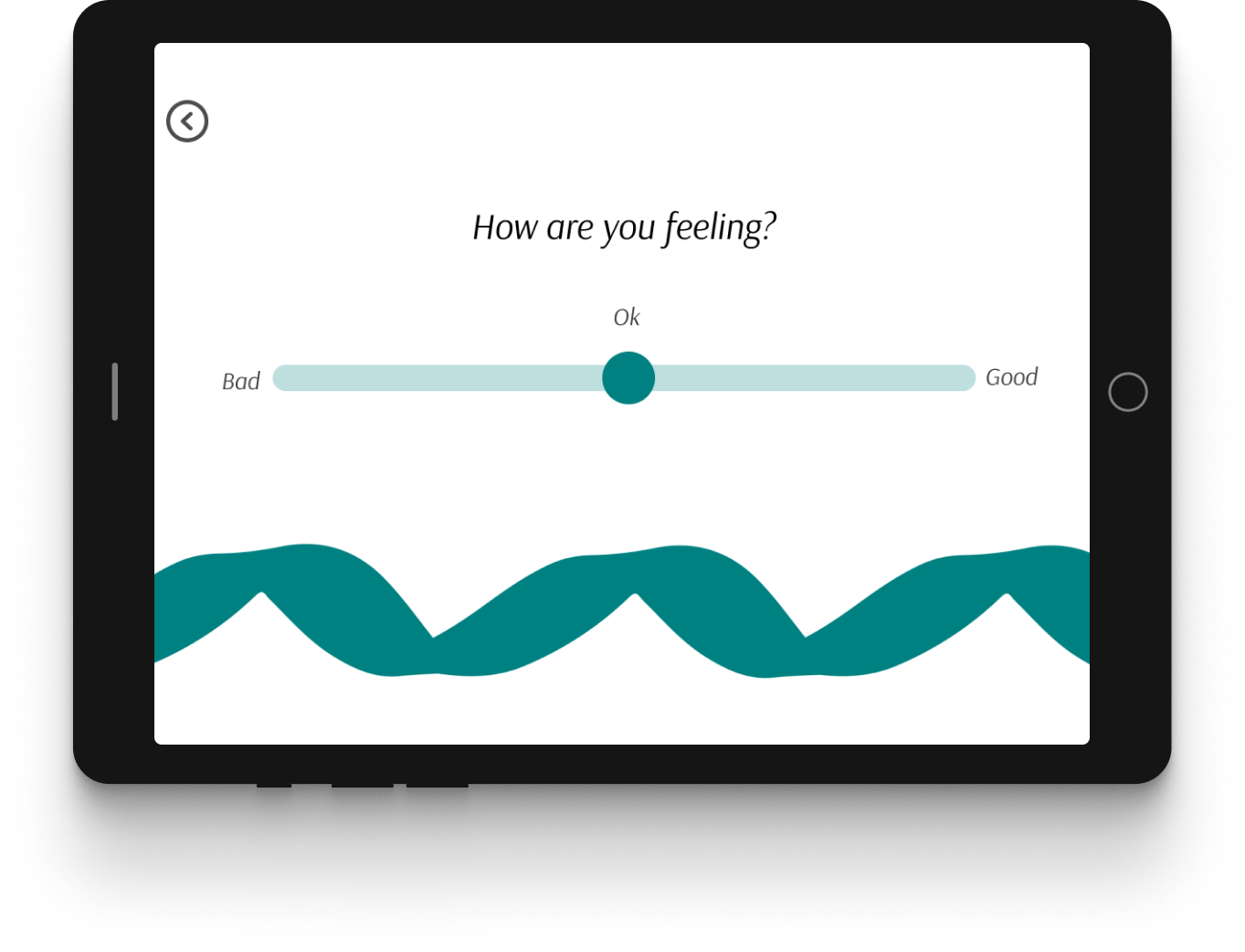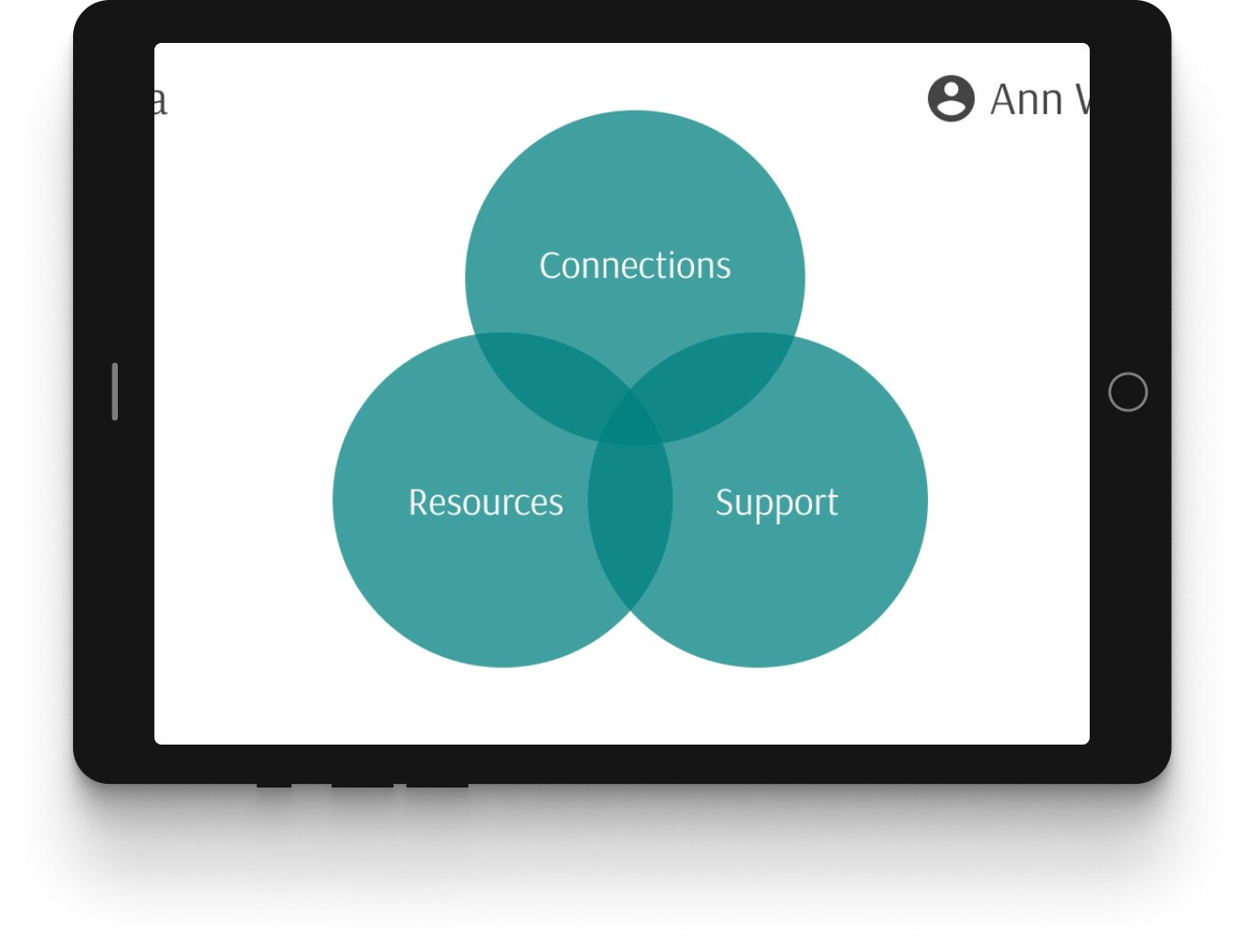
Aurora
Project Description: Team Teal created a support kiosk to help ovarian cancer survivors transition from treatment into survivorship. The Aurora kiosk was prototyped to function in the waiting room on the oncology floor of the University of Washington Medical Center. I was the project manager and the lead designer for this project.
The American Cancer Society estimates that in 2020, about 21,750 new cases of ovarian cancer will be diagnosed and 13,940 women will die of ovarian cancer in the United States.
Quick Stats
My Role: UX Designer & Project Lead
Team: Me!, Kerry Horton, Kailey Terranciano & Michele Tenin
Duration: March 2019 - May 2019
Tools: Pen & Paper,
Research
For this project, it was extremely important that we took the time to learn about ovarian cancer and cancer care. Our team conducted a media audit and literature review to build our background knowledge and learn terminology. Our second phase of research consisted of physician interviews and patient interviews with our community partner, survivors teaching students. Our goal was to get a better understanding of the ovarian cancer survivors journey, and where the pain points in the process lie.
We asked
How might we better support ovarian cancer survivors navigate the transition from treatment into survivorship?
Synthesis
With provider guidance and survivors stories, we qualitatively coded all of our notes to begin thematic analysis. We wrote all of our insights on a whiteboard and started to form clusters of similar insights.
Design Requirements
-

Connection
Survivors repeatedly mentioned the benefits of human connection, with other survivors. We hope to support increased ability to connect with other survivors and the ovarian cancer community.
-

Support Groups
Survivors leverage support groups in a variety of ways. We aimed to support group related healing through increasing access to support groups that matched their interests and abilities
-

Education
Survivors spend a lot of time finding mental health resources for post treatment healing. We want to create a resource base for ovarian cancer survivors to learn more about healing.
Design
We ideated surrounding these principle themes and chose to work with the idea of a kiosk experience composed of a physical kiosk, an interactive digital survey, and a printable component. In our research, we found that the majority of ovarian cancer patients are above age 60, therefore a digital solution alone wouldn’t be enough. Our experience is meant to address this gap of treatment and support ovarian cancer survivors in reaching out and continuing their journey. A physical kiosk in the same space they began their treatment would create an element of trust, and continuity of care. The short digital survey would be customizable to the user’s needs, then they would receive a printout reminder to take home to remind them of the resources they acquired.
The Kiosk
A physical kiosk in the same space survivors began their treatment would create an element of trust, and continuity of care. The prototype kiosk can be attached to any wall and are easy to assemble. It consists of two separately sold pieces made of plexiglass, one with a the screen and the digital survey, and the other optional piece with a foldable chair attached. The optional piece provides more privacy and also opens out for greater accessibility. Survivors mentioned information privacy and security as a concern so these two pieces were designed to provide high walls provide privacy but are also open to allow for a more open feel.
Interactive Survey
Try our interactive digital survey here
Survivors are often given a pamphlet of resources at the end of their treatment, but remarked often finding these pamphlets impersonal and irrelevant. In creating our survey, we sought to find a way to revamp these pamphlets and make them more meaningful to each individual survivor.
Connections: There was a common theme of connection amongst ovarian cancer survivors. Many mentioned valuing the connections they made with other survivors during the post-treatment process and leaning on those connections to assist their transition. We designed this pathway to support and encourage these connections.
Resources: While resources were provided in the pamphlets, our survey provides survivors with more tailored resources.
Support: This pathway offers support groups in the area that match the interests and needs of the survivor.






The Pamphlet
Our printout allows survivors to take home their resources, support, and connections in a personalized pamphlet format. At their next follow-up visit, they can edit and change their online profile and reprint their personalized portfolios.



